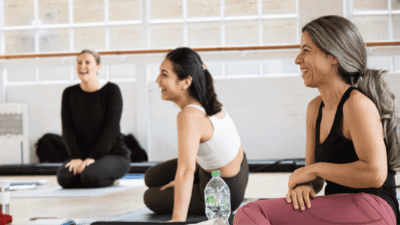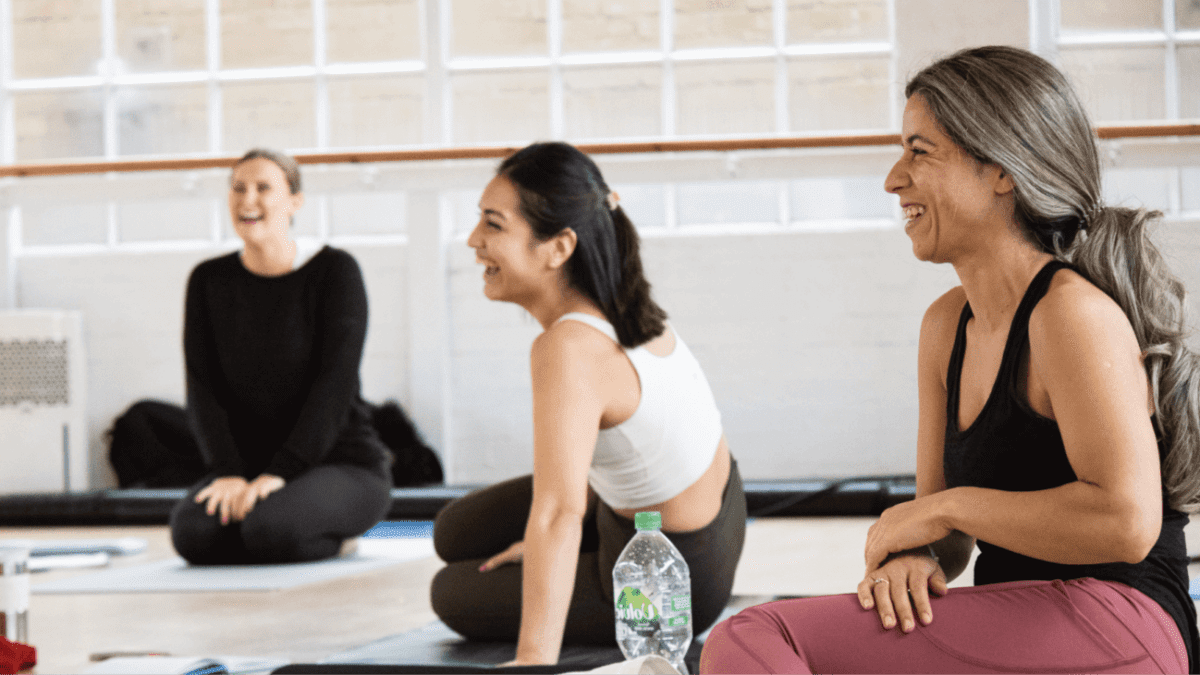



As instructors we know that, but we must enforce the importance of it to our participants. In essence, you can move to the next level of each Pilates exercise when you can successfully perform the current level with immaculate technique and have been doing so for a number of weeks or months, depending on the level and exercise.
A good Pilates instructor will layer the exercises they teach so participants are aware of each option and are encouraged to stay at a level appropriate to them on that day. It is important to remember that just because you can achieve a ‘hard’ option on one exercise doesn’t mean you can do that every week. Another week, you may have twinged something whilst gardening for example, and the lower option might be all you can manage. Also, you may be on the lower level of some exercises, and a higher level of others. That’s okay too. Your body will adapt to the stresses placed on it and you may be strong in different areas.
A good Pilates instructor will also let you know if your choice of exercise level is not challenging enough or is too much for you and they will also explain why. They will help you to understand the teaching points of that particular exercise and also explain why you could do more or should do less.
As a participant, the key to knowing when to move up to the next level is when you feel you really understand the option you are currently doing. If you can’t feel it, it’s not because you are good at it and need to move up an option. It’s more likely to be that you haven’t quite understood it and have something at the wrong angle, making it easier than it should be (by accident). This could therefore leading you to believe that you could manage the next option (when in actual fact you have not performed this option with correct technique yet). Feeling the lower options of every exercise working doesn’t go away. Pilates is hard when done with good technique.
Pilates is a discipline like no other and egos need to stay at the door. You can’t be competitive in this room because more often that not the exercise is about stability, not mobility. So if you are looking around trying to make sure your leg is the highest then your cervical spine could be out of line from looking around and it doesn’t matter how high your leg is. What matters is pelvic stability, transverse abdominis (TVA), pelvic floor (PF), neutral spine, shoulder stabilisation, lateral thoracic breathing and cervical spine alignment. If you have all of those 100% accurate, you will know about it. You will be working hard, even if your leg is not as high as you think it could be. Once the essence of each exercise is understood and you know where to focus your energy and mind, then you will begin to perfect the movement and in turn may wish to try the next option.
If you do decide to move to the next level of any Pilates exercise, it is important that you are honest with yourself. There is no reason why you should be able to do it. It is harder. It should be a challenge. If it’s not, once again check your understanding as this may be a mechanical error and could easily be fixed for maximum benefit. If you don’t think your TVA is engaged, be honest. Go back to the level where you know it was. If you think your spine may have moved beyond optimum, go back to the level where you know you had control. No good will come of performing the harder movements without the correct stability.
If in doubt, ask your instructor to be honest with you. Ask them to let you know and help you understand why each option is correct for you. Instructors appreciate being asked and would know their participants really want to get the best from their Pilates experience.
Written by Heather Oakes